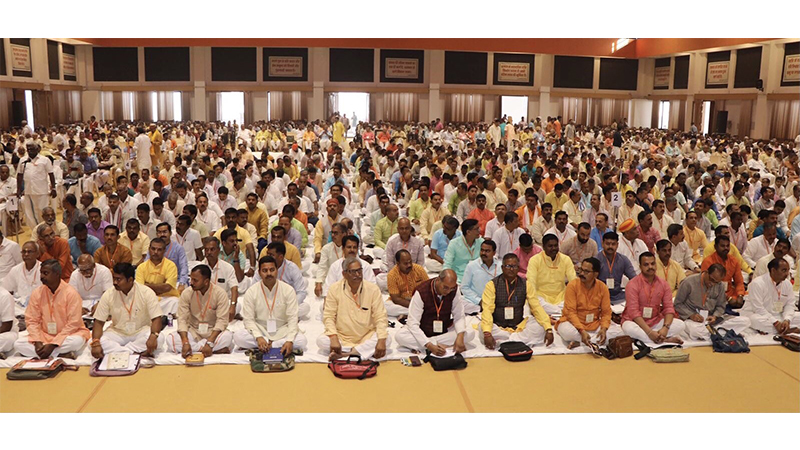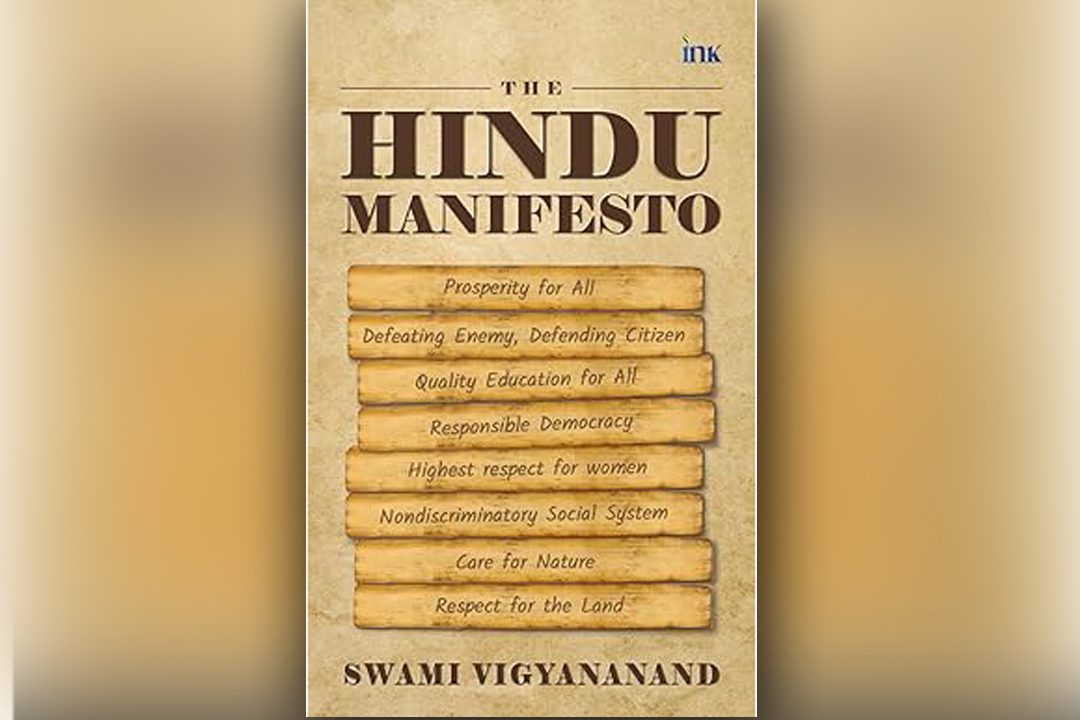From key strategist Pingle to Kothari brothers : Unsung heroes of Ram Temple movement
Updated: November 30, 2023 10:22

There have been several unsung heroes of the movement to build a Ram temple at the birthplace of Lord Ram in Ayodhya, Uttar Pradesh, in the post-Independence era, especially during the 1980s and early 1990s.
The ‘Warrior Sadhu’ who put an idol of Lord Ram at the disputed site in 1949, a former Congress leader credited with preparing the ground for the movement, two brothers from Kolkata who came to Ayodhya to perform the kar seva (volunteer service) and were killed in police firing — there have been many who are remembered for their contribution.
Here’s a look at a few of them:.
Moropant Pingle
Moreshwar Nilkanth Pingle, popularly known as Moropant Pingle was a graduate from Morris College of Nagpur and a pracharak(full time worker) of the Rashtriya Swayamsevak Sangh (RSS), Pingle was the ‘invisible’ key strategist, who played a crucial role in initiating all the major ‘yatras’ and countrywide campaigns, including the ‘Shila Pujan’ programme, under which more than 3 lakh bricks were sent to Ayodhya from all over the country. He was also the force behind ‘Eaktmata Yatra’ in 1983 that was followed by Ram-Janaki rath yatra in 1984. Seven chariots travelled through India depicting Lord Rama behind the bars. These earlier events formed the backbone of the massive movement that was created across the nation to build the Ram Temple at Ayodhya, the birth place of Lord Rama. Pingle had also played an important role in the anti-emergency movement during 1975-77. From 1946 to 1967, he worked as a full time worker of the RSS in Maharashtra. Pingle always preferred to work behind the scenes and was a key strategist for building the temple movement in the 1980s.
Kothari brothers
Ram Kumar Kothari and Sharad Kumar Kothari were siblings, who came to Ayodhya from Kolkata for the kar seva in October 1990. They were associated with the RSS inspired organisation Bajrang Dal that was set up in 1980s. They participated in the kar seva (volunteer service) in Ayodhya on 30 October 1990 as the members of the first batch of kar sevaks. Two days later, on 2 November, both of them were shot dead from point-blank range by the police when they were performing the kar seva. Ram was 23 and Sharad was just 20 years old when they were killed. The killing of the Kothari brothers outraged Hindus across the country, and they were treated as the heroes and martyrs of the Ramjanmabhoomi movement. In the 1990s, the deaths drew a large number of youth to this movement. During the Bhoomipujan in August 2020 that marked the beginning of construction of the Ram Temple at Ayodhya, the family members of Kothari brothers were also invited.
Devraha Baba
Known to be a highly spiritual ascetic, the details about his birthplace and year remain a mystery. He stayed on the banks of Saryu river near Deoria in Uttar Pradesh. His followers included first President of India Rajendra Prasad, and leaders like Indira Gandhi, Rajiv Gandhi and Atal Bihari Vajpayee.
He presided over the ‘Dharma Sansad’ in January 1984 at Kumbh in Prayagraj where a decision was taken collectively by Hindu religious and spiritual leaders cutting across sects to lay the foundation stone of a Ram temple in Ayodhya on 9 November 1989. It is said that when Rajiv Gandhi went to seek his advice and blessings regarding laying of the foundation stone, Devraha Baba told him, “Bachcha, ho jane do (son, let it happen)”.
Bairagi Abhiram Das
Born in Darbhanga, Bihar, Bairagi Abhiram Das was an ascetic from the Ramanandi sect and his name cropped up after an idol of Lord Ram emerged at the disputed structure of Ram’s birthplace on the intervening night of 22-23 December 1949. He was made the prime accused in the FIR lodged by the administration at the time.
He was known as the ‘Warrior Sadhu’ in Ayodhya. A member of the Hindu Mahasabha, Das was well-built and well-versed in the art of wrestling. He died in 1981.
Mahant Avaidyanath
Avaidyanath was the first president of the Ramjanmabhoomi Mukti Yagya Samiti set up in the mid-1980s to lead the Ram Temple movement. He was the president of another key organisation — Ramjanmabhoomi Nyas Samiti — that played a crucial role in this movement.
Born as Kripa Singh Bisht, he became a follower of Mahant Digvijaynath of Gorakshapeeth in Uttar Pradesh and took up the name of Mahant Avaidyanath in 1940 as an ascetic.
In 1969, he became the head of the Gorakshapeeth. He was also a member of Hindu Mahasabha. He was a five-term MLA and was a four-term Lok Sabha MP from Gorakhpur. He was made one of the accused in the Babri Masjid demolition case.
Shrish Chandra Dikshit
Dikshit was a frontline leader of the Ramjanmabhoomi movement in the 1980s. He was the director general of police in Uttar Pradesh from 1982 to 1984. After his retirement, he joined the Vishwa Hindu Parishad as its vice-president.
He played a key role in strategising the movement of kar sevaks in Ayodhya and working out the finer details for various on-ground campaigns run by the VHP. He was arrested in 1990 for participating in Ramjanmabhoomi movement during the kar seva in Ayodhya. He was elected as a member of Parliament from the Varanasi constituency in 1991 on a BJP ticket. Varanasi is now represented by Prime Minister Narendra Modi.
Vishnu Hari Dalmia
A scion of a well-known industrialist family, Dalmia was the president of VHP from 1992 to 2005. Known for keeping a low profile, Dalmia was one of the key leaders of the Ramjanmabhoomi movement.
When Shri Ram Janmabhoomi Nyas was set up in 1985, he was made its treasurer. He was arrested after the demolition of the Babri Masjid.
Daudayal Khanna
As the general secretary of Ramjanmabhoomi Mukti Yagna Samiti, Daudayal Khanna played a key role in preparing the ground for the movement.
He was a Congress leader in his early years and was the health minister in the Congress-led government in Uttar Pradesh in the 1960s. He was the one who brought up the issue of reconstructing temples in Ayodhya, Mathura and Kashi (Varanasi) at a public meeting in 1983. His initiative proved to be the key catalyst in restarting the Ramjanmabhoomi movement. In September 1984, he led one of the first ‘yatras’ of this movement from Sitamarhi, Bihar.
Swami Vamdev
A soft-spoken ascetic, who was deeply committed to the cause of cow protection, Vamdev played a key role in bringing various Hindu religious and spiritual leaders together at one platform through an all India-level meet in Jaipur in 1984.
More than 400 Hindu religious leaders brainstormed for 15 days to put together the future roadmap of the movement. Swami Vamdev led the kar sevaks (volunteers) from the front in 1990 in Ayodhya when several of them were killed in police firing ordered by the Mulayam Singh Yadav’s government. Despite his old age, he was present in Ayodhya on 6 December 1992 when the Babri Masjid was pulled down.
(All inputs for this article have been sourced from the archives of Vishwa Hindu Parishad and ‘Yudh Mein Ayodhya’ written by Hemant Sharma and published by , Prabhat Prakashan).












